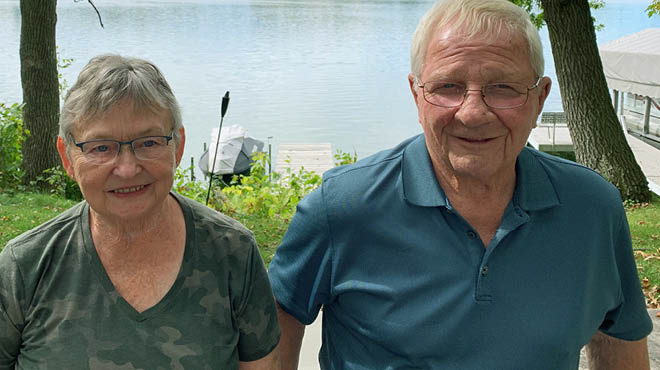Recent Posts
Absorbable implant to open blocked airways

Front and center on your face, your nose is an important and complicated structure, with its bone, cartilage, skin and sinuses. It serves many functions, including filtering, humidifying and warming the air you breathe, and providing a sense of smell that is important for taste, odor identification and memory. When your nose is congested, it is difficult to breathe, and taste also may be adversely affected.
For some people, the stuffy or blocked nose feeling doesn't go away, even when they otherwise feel healthy. They may be affected by a condition called nasal obstruction. Now a minimally invasive targeted treatment is available to increase airflow and reduce that stuffy feeling.
Nasal obstruction
Nasal obstruction occurs when the airflow through your nose is blocked in some way. This could be caused by swelling of your nasal passages due to a cold; allergies; or exposure to irritants, such as smoke or dust. Other people experience nasal obstruction because of a structural issue. A common structural cause of restricted nasal breathing is internal nasal valve collapse.
Structurally, the internal nasal valve is the narrowest part of the nasal passageway and is about 1 centimeter inside the nostrils. Internal nasal valve collapse can be caused by poorly positioned or weak cartilage. Just a small amount of narrowing can significantly restrict airflow.
You could develop a nasal valve collapse if you have a deviated septum, have had a nasal injury or facial paralysis. More often, it is simply an anatomical variant. Nasal valve collapse can worsen or cause more symptoms with age due to the weakening of connective tissue.
Nasal obstruction can cause uncomfortable symptoms and feeling like your nose is blocked or stuffed up all the time. It can lead to chronic headaches, dental decay, bad breath, difficulty breathing while exercising and poor sleep quality. It also can exacerbate snoring.
Nasal valve collapse symptoms are often attributed to other conditions, such as allergies, viral illness or sinusitis. Unlike those conditions, nasal valve collapse doesn't resolve after the illness is over or change during the seasons. It is also easily overlooked during a nasal exam, as other factors frequently contribute to the nasal obstruction, and looking in the nose with a speculum or otoscope bypasses the internal nasal valve.
Nasal implant treatment
An absorbable nasal implant, also known as Latera, is a new, minimally invasive treatment option for nasal obstruction caused by internal nasal valve collapse. It uses a 2-centimeter absorbable implant to increase airflow and relieve symptoms.
The first step is to schedule a consultation with an otorhinolaryngologist to determine if you would benefit from the procedure. People who have found exterior nasal strips beneficial in reducing symptoms are likely good candidates for an absorbable nasal implant.
During the procedure, you will sit in an examination chair, and the inside of your nose will be numbed with a local anesthetic. A hollow tube containing the implant is inserted into the outside wall of the nose. When the tube's tip reaches its target, typically the area just below where eyeglasses rest, the implant is released in its supporting position and the tube is removed. The implant is made of polydioxanone, which has been used in absorbable sutures and other medical applications for decades.
If you are scheduled for the procedure, plan for a one-hour appointment and ask your otorhinolaryngologist if you will need someone to drive you home. During the treatment, you will feel some pressure and minor discomfort.
You can resume regular activities the next day. You may have mild bruising and inflammation, but these issues should resolve quickly. You and others will not be able to see the implant through your skin, and it will not change the shape of your nose.
Over the next 18 months, the implant will be absorbed by your body and replaced with naturally occurring collagen in your body. This results in continued support of the lateral nasal wall and airflow.
An absorbable nasal implant is not appropriate for everyone with nasal obstruction. A consultation with an otorhinolaryngologist will help determine the best treatment option to address the causes of your obstruction. For example, if you have a deviated septum and nasal valve collapse, both issues may need to be treated to resolve the obstruction.
Expected results
In a clinical study, patients still experienced a reduction in nasal symptoms two years after the procedure was performed.
Patients reported experiencing:
- Reduced nasal congestion or stuffiness
- Less trouble breathing through the nose
- Improved ability to get enough air through the nose during exercise or exertion
- Reduced nasal blockage or obstruction
- Less trouble sleeping
Talk with your primary care professional or otorhinolaryngologist if you have nasal obstruction and think an implant can help.
David Valencia, M.D., is an otorhinolaryngologist and head and neck surgeon in La Crosse, Onalaska and Prairie du Chien, Wisconsin.





